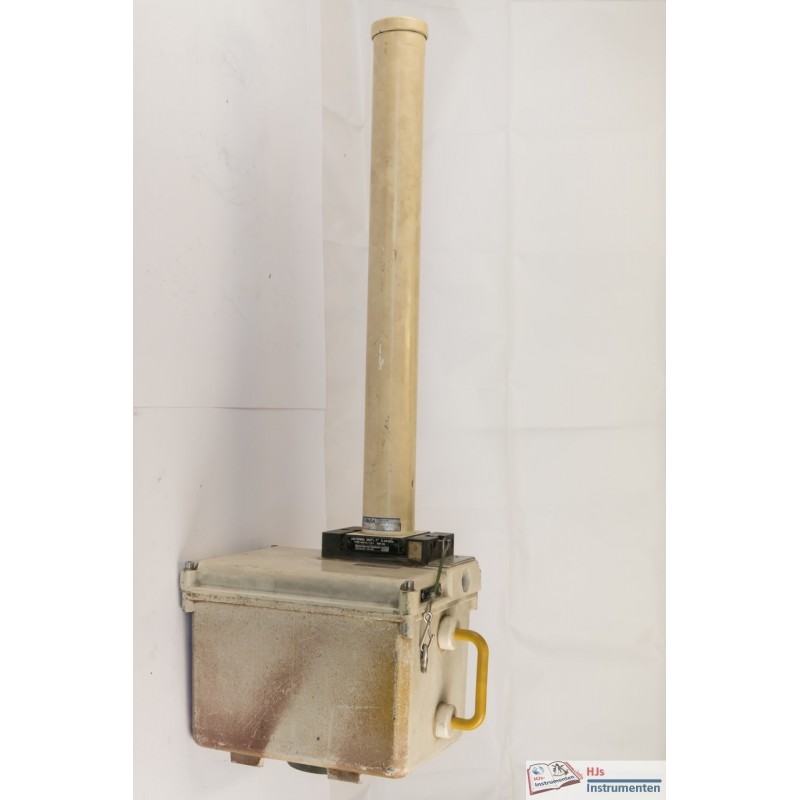






Transmitter for Microfix
Text largely copied and adapted from Alan Cordwell.
"MicroFix was a Racal Survey Range-Range system. It operated at C-Band microwave frequencies (5 GHz) and was innovative in using pulse stretching, and compression techniques in the TX and RX sections respectively. The antennae were constructed to radiate a circularly polarised field so that reflected signals were far better suppressed than with linear polarising. Any reflected signal would have the opposite polarising and would be suppressed by up to 30dB. Various different antennae were produced, both omni-directional and sector types.
The stated accuracy of the system was 1 metre and the specified maximum range was 80km over a line-of-sight path. It could also be persuaded to continue working out to 100Km plus. If one lost lock one then had to return to within 79km range. There was a mast-head unit with an antenna and containing the transmitter-receiver electronics (T/R), and a Control-Measuring Unit (CMU - model 90600). It was built in to the same casing as the 90515 HyperFix receiver but with different front and back panels. Communication between the T/R and the CMU was by dual RS422 lines and there could be up to 350m (maybe more) of data cable between the two. Voltage drop in the power lines often meant one had to boost the supply to the T/R when such lengths were involved.
A special advantage with these CMUs was that the internal processors could compute a position provided that co-ordinates for the static beacons had been inserted and a working spheroid set up in them. Thus they could directly give out position data to a plotter, or even just a printer, so acting as a stand-alone package."
During my study Hydrography A at the Hogeschool van Amsterdam in the 1990's the school had a small Microfix network running around Amsterdam with one transmitter located on Pampus. During the few practical moments I remember having to do a baseline crossing to compute the correct transmission speed. This was done on the CMU which is unfortunately missing from my collection.
Shown are two transceiver units (one with antenna, one without). When no longer usefull with the NeSA tgese units arrived in the collection of Rob Berlijn (together with a number of other instruments also in my collection). When Rob passed away to early his widow donated the objects to CT-Systems who in turn, after many years of custody donated them to the exception of a few land survey instruments which are now in the collection of Nicolas de Hilster as they are more fitting in that collection. I am very happy to be able to show these as I was afraid that they had become lost to history. Thank you Rob for your foresight!
More Information:
Data sheet